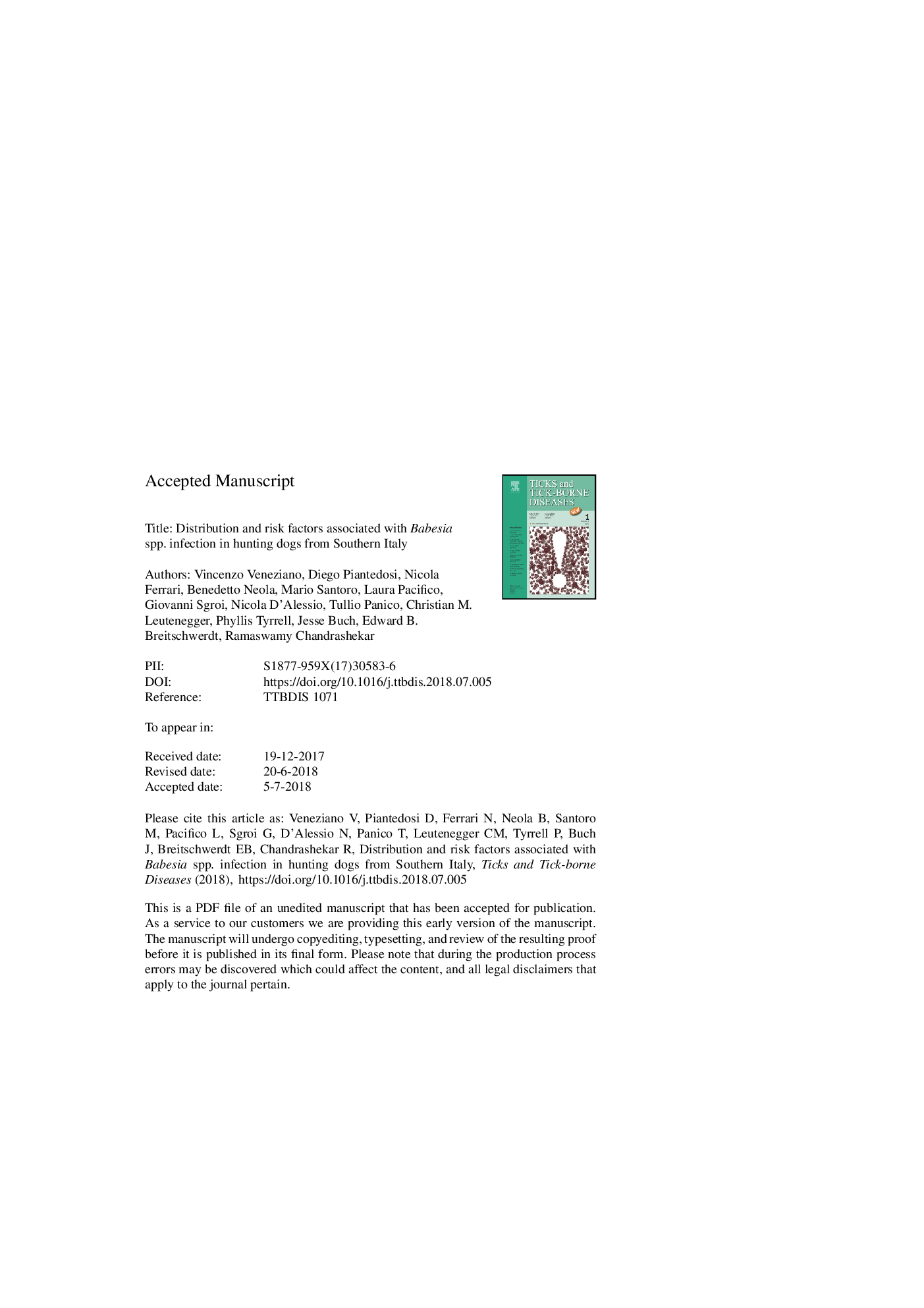| Article ID | Journal | Published Year | Pages | File Type |
|---|---|---|---|---|
| 8965632 | Ticks and Tick-borne Diseases | 2018 | 18 Pages |
Abstract
Canine babesiosis is caused by haemoprotozoan organisms of the genus Babesia which are transmitted by the bite of a hard tick. The aim of this survey was to determine the prevalence and risk factors associated with Babesia species infections in hunting dogs from Southern Italy. Blood samples were collected from 1311 healthy dogs in the Napoli, Avellino and Salerno provinces of the Campania region of Southern Italy. Serological testing was performed using two enzyme-linked immunosorbent assays (ELISA), with one designed to detect B. canis and B. vogeli antibodies, and the other designed to detect B. gibsoni antibodies. Blood samples were also tested by quantitative real-time polymerase chain reaction (qPCR) assays for amplification of B. canis, B. vogeli and B. gibsoni DNA. The overall seroprevalence for B. canis/B. vogeli was 14.0%, compared to 0.2% for B. gibsoni. B. canis and B. vogeli PCR positive rates were 0.15% and 1.1%, respectively. B. gibsoni DNA was not amplified by qPCR. Male gender (OR 1.85), increased age (OR 1.01), long hair coat (OR 1.61) and living in Salerno province (OR 1.71) represented risk factors for B. canis/B. vogeli seroreactivity. Hunting dogs in Southern Italy are often exposed to B. canis/B. vogeli, however Babesia spp. infection was infrequently detected using qPCR. Further studies are needed to determine the extent to which Babesia spp. cause clinical disease in hunting dogs, and to evaluate the potential epidemiological relationships between hunting dogs and wild animal populations sharing the same area.
Related Topics
Life Sciences
Agricultural and Biological Sciences
Animal Science and Zoology
Authors
Vincenzo Veneziano, Diego Piantedosi, Nicola Ferrari, Benedetto Neola, Mario Santoro, Laura Pacifico, Giovanni Sgroi, Nicola D'Alessio, Tullio Panico, Christian M. Leutenegger, Phyllis Tyrrell, Jesse Buch, Edward B. Breitschwerdt,
